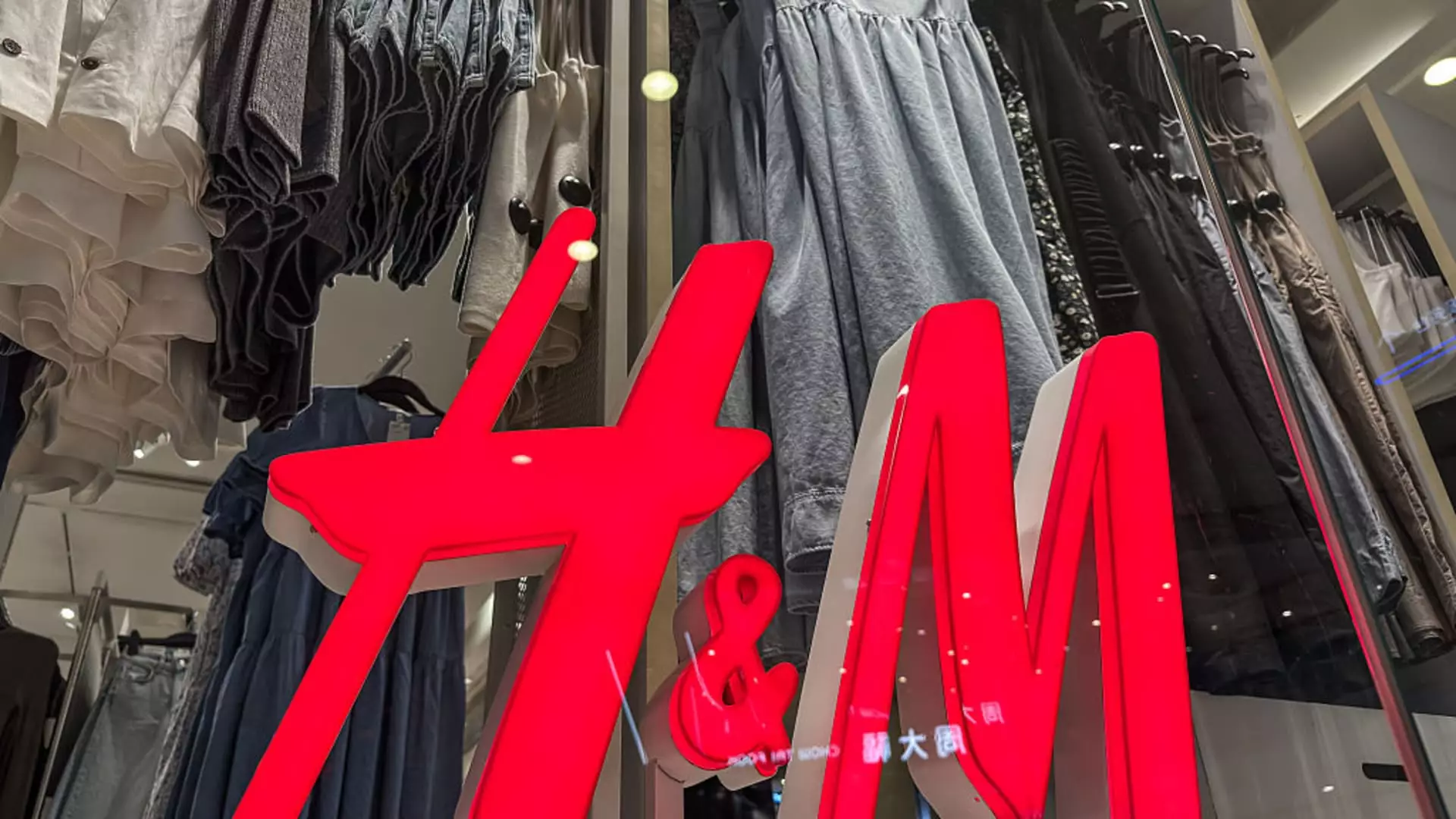H&M, the Swedish clothing behemoth that has long been revered for its affordable fashion offerings, recently reported a modest increase in demand as summer approaches. However, a closer examination reveals that this uptick might be more of a mere band-aid than an indication of restored market health. While shares rose by 3.85% at one point, a sense of caution looms over the company and its ability to navigate this intricate landscape. The implications of fluctuating sales, coupled with a profoundly price-sensitive consumer market and rising production costs, present H&M with unprecedented challenges.
The Shadow of Price Sensitivity
In today’s uncertain economic landscape, consumer behavior is considerably shaped by financial insecurity. H&M’s CEO, Daniel Erver, aptly recognized that shoppers have become acutely “price sensitive.” This hardly comes as a surprise; with inflation gripping markets worldwide, many families are reevaluating their spending priorities. The inclination to shop at lower-cost retailers like Shein and Temu is indicative of a changing tide in consumer consciousness, revealing not just a desire for low prices, but also a preference for sustainability and ethical considerations in clothing choices.
H&M’s position, straddling both fast fashion and sustainable initiatives, places it in an awkward predicament. As it grapples with rising costs due to tariffs and a robust dollar, the company is considering price hikes to maintain its competitive stance. However, any miscalculation in gauging consumer sentiment could further alienate budget-conscious shoppers. It remains to be seen whether H&M can evolve its strategy swiftly enough amid these turbulent conditions.
Tariffs and their Ripple Effects
While H&M monitors the potential impact of U.S. trade tariffs, the uncertainty surrounding international trade policies adds another layer of complexity to their operational strategy. The company’s significant dependency on Asian production facilities makes it particularly vulnerable to geopolitical shifts. The anticipated expiration of the 90-day levy pause will likely present further challenges, as potential price adjustments must be finely balanced against preserving market share.
The notion that H&M can simply raise prices to offset increasing production costs seems overly optimistic, particularly as competitors like Zara begin to implement similar strategies. The problem lies in whether the average consumer is willing to pay a premium, especially when alternative options remain available at rock-bottom prices. Maintaining relevance amid these dynamics is becoming increasingly daunting.
A Reckoning for Store Closures and New Directions
Despite the slight increase in sales reported, H&M is not blind to the realities of the retail environment. The announcement of 200 store closures by 2025 underscores a strategic retrenchment, reflecting a necessary pivot toward sustainability and digital innovation. The decision to decrease brick-and-mortar locations, while opening 80 new stores in emerging markets, signals a broader shift intended to adapt to changing retail landscapes.
Yet, should H&M continue to cling to its traditional retail frameworks, even while expanding online and into new markets, it risks falling behind its competitors. The looming question is whether the company can embrace innovation swiftly enough to capture not only market share but also consumer loyalty in a world where ethical consumption is gaining traction.
Struggling to Stay Relevant
H&M’s ongoing battle against stagnant sales and increased competition from cheaper alternatives evokes a collective concern about the future of fast fashion. The stark realization that the company is grappling with not just market dynamics but a deep-rooted identity crisis is perhaps the most troubling aspect of their current predicament. The longer they take to authentically align their pricing strategy, product offerings, and ethical engagements, the stronger the risk of alienation from their core demographic.
This moment for H&M is more than just a rebound or recovery; it is a call for introspection on what they stand for as a brand. As the competitive landscape shifts with increased scrutiny on sustainability and ethical practices, failure to innovate could render them obsolete in the eyes of a conscientious consumer base. H&M’s path forward is fraught with challenges, and how they respond to these changing tides may very well determine whether they can maintain their position in the fashion hierarchy or fall victim to the very market forces they hope to navigate.


Leave a Reply